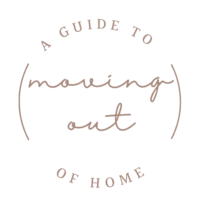
Handy Tips for the Kitchen
Read the recipe thoroughly
Before you start cooking read the recipe ingredients and instructions so you know what items, time and skills you need. There is nothing worse than starting to cook dinner and finding out you need to marinate the dish overnight or you need fresh squid ink.
Start with a clean workbench
Get rid of clutter so you can focus on the job at hand. Wipe down the benches, put away any items you don’t need. Put on some up beat music and let the fun begin!
Fill up the sink with warm soapy water
You can wash your hands and dishes as you go so you don’t have a sink full of dishes and sticky taps at the end.
Layout everything you need before you start
Having to stop and start cooking because you can’t find the cumin or the slotted spoon is a pain. As soon as you have used an ingredient put it away. Then you know you have used it and won’t double up on the ingredient and you will keep your work bench clear.
Knives
Never put a sharp knife in soapy water, you won’t know it’s there until the water turns red – ouch! Always use a sharp knife, blunt knives are more likely to slip from your apple/tomato/cheese right into your flesh. If you are worried about sharp knives in the drawer you can always opt for a knife block or a knife with a sheath. If you do cut yourself apply a blue band-aide. Why blue? Because it will stand out if it falls into the food and you can fish it out easily – gag!
Cutting Board
To prevent your cutting board from slipping place either a damp tea towel or moist kitchen paper towel under the cutting board. If your cutting board is moving on the bench when you are dicing and slicing it is really easy to cut into your flesh by accident. If you do cut yourself – you need to apply a blue band aid so if it falls into your cooking – you can fish it out easier than a nude coloured one – ew!
Fridge
If you store raw food on higher shelves and they leak, the blood will contaminate all of the items underneath and create a cleaning nightmare.
- Top Shelf – Deli items or left overs, food that does not need to be cooked;
- Middle shelves – Dairy, including milk, cheese and yoghurts;
- Inside door – Juices, Sauces and Jams (Note the door is warmest part of the fridge;
- Bottom shelf – Raw food;
- Drawers – Fruit and Vegetables.
Raw Eggs
Rinse anything that has touched raw eggs immediately raw egg is a pain to remove when it had dried and tarnishes stainless steel. Always break your egg into a small bowl before adding it to other ingredients, this way if you have a bad egg it won’t spoil all of the other ingredients you are adding to.
Raw Chicken
If you are using raw chicken you need to make sure you don’t cross contaminate. Bowls, knives, cutting boards and hands need to be wash separately.
When handling raw chicken try to handle everything else first before you work with raw chicken. And don’t leave it sitting on the kitchen bench as that is when the bacteria begin to work it’s magic. Whereas red meat is better to cook with when it is at room temperature. When cooking with chicken you need to make sure it has been thoroughly cooked so it is not pink inside. The best way to make sure it is cooked is to insert a thermometer into the thickest part of the meat should be 75 degrees celcius.
One final handy tip for the kitchen
If you have never diced an onion before check out this YouTube video from Gordon Ramsay.
Related Article: Kitchen Essentials
